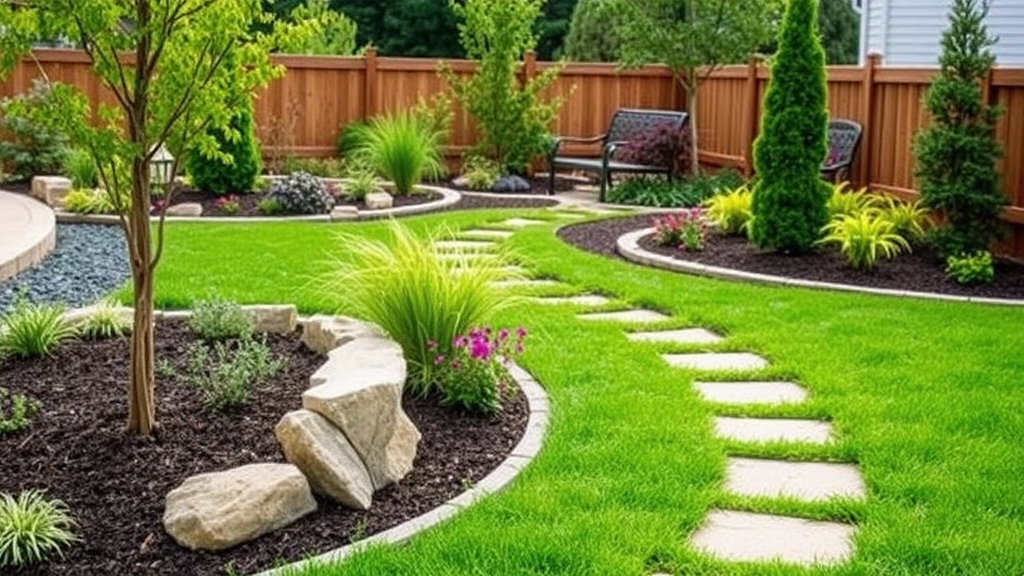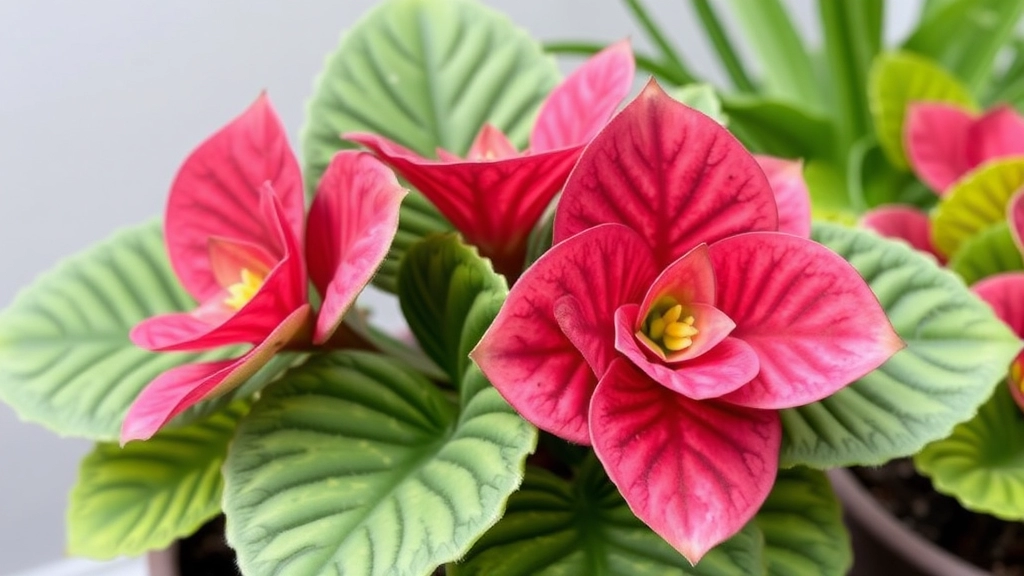Welcome, plant enthusiasts!
Today, we’re diving into the fascinating world of the Elephant Ear Kalanchoe Beharensis. This remarkable succulent, with its massive velvety leaves and unique texture, is a true showstopper in any garden or indoor space. From its impressive size to its low-maintenance care requirements, we’ll explore everything that makes this plant a must-have for both novice and experienced gardeners alike.
Comprehensive Guide
In this comprehensive guide, we’ll cover the Elephant Ear Kalanchoe’s distinctive characteristics, optimal growing conditions, watering needs, and propagation techniques. We’ll also tackle common pests and growth problems, and share creative landscaping applications to help you make the most of this extraordinary plant. Whether you’re looking to add a touch of drama to your garden or seeking a conversation-starting indoor specimen, the Elephant Ear Kalanchoe Beharensis is sure to captivate and inspire.
Characteristics of Elephant Ear Kalanchoe Beharensis
Alright, let’s dive into the world of Elephant Ear Kalanchoe Beharensis!
Ever seen a plant that looks like it’s straight out of a sci-fi movie? That’s our guy.
This beast of a succulent is a real head-turner.
Picture this: massive, velvety leaves that feel like touching a cloud.
They’re not called “elephant ear” for nothing – these leaves can grow up to 2 feet long!
The color? A silvery-green that catches the light just right.
But here’s the kicker – it’s got these weird, fuzzy bumps all over. Feels like stroking a cat, I swear.
And don’t get me started on the edges. They’re all wavy and ruffled, like nature’s own art project.
Now, height-wise, this bad boy can reach up to 10 feet tall. Yeah, you heard that right.
It’s like having a living sculpture in your garden.
But here’s the cool part – it’s actually pretty low-maintenance.
Perfect for those of us who forget to water our plants (guilty as charged).
Oh, and did I mention the flowers? They’re not the main event, but when they show up, it’s like a little bonus.
Tiny, bell-shaped blooms in clusters. Not too shabby.
So, if you’re looking for a plant that’s a conversation starter, Elephant Ear Kalanchoe Beharensis is your guy.
Trust me, your garden will thank you.
Optimal Growing Conditions

Listen up, plant lovers! If you’re keen on growing Elephant Ear Kalanchoe Beharensis like a pro, you’ve gotta nail the growing conditions. Trust me, I’ve been there, and I’m gonna spill the beans on what works best.
Light and Temperature: The Sweet Spot
- Bright, indirect light is your best mate
- Can handle some direct sun, but not too much (think morning rays)
- Ideal temp range: 60-75°F (15-24°C)
- Doesn’t play nice with frost, so keep it cosy!
Soil and Drainage: Don’t Get Bogged Down
Here’s the deal with soil:
- Well-draining is key (mix in some perlite or sand)
- Slightly acidic to neutral pH (6.0-7.0)
- Cactus or succulent mix works a treat
Pro tip: Add some gravel at the bottom of your pot. It’s a game-changer for drainage!
Humidity: Not Fussy, But Appreciative
- Can handle dry air like a champ
- Enjoys a bit of misting now and then
- Don’t go overboard â it’s not a tropical diva!
Space to Grow: Give It Room to Shine
These beauties can get big, so:
- Choose a pot with wiggle room
- Repot every couple of years
- Outdoor? Give it space to spread those leaves
Remember, folks, nailing these conditions is half the battle. Get this right, and your Elephant Ear Kalanchoe will be the talk of the town. Trust me, I’ve seen these plants transform from meh to magnificent with just a few tweaks to their environment.
So, ready to create the perfect home for your Elephant Ear Kalanchoe Beharensis? Let’s get growing! If you’re interested in other Kalanchoe varieties, check out the Kalanchoe tomentosa, also known as the Panda Plant, for a fuzzy and adorable addition to your collection. And for those looking to expand their Kalanchoe knowledge, don’t miss our guide on how to care for Kalanchoe tomentosa for expert tips and tricks.
Watering Requirements and Care Guidelines
Alright, let’s dive into watering and caring for our Elephant Ear Kalanchoe Beharensis.
Here’s the deal with these succulents:
They’re thirsty, but not too thirsty.
Think of them as the Goldilocks of plants – not too wet, not too dry.
Watering Requirements
- Water deeply, but infrequently
- Let the soil dry out between waterings
- In summer, water every 7-10 days
- In winter, cut back to every 2-3 weeks
Pro tip: Stick your finger in the soil. If it’s dry 2 inches deep, it’s time to water.
Care Guidelines
- Light: These guys love bright, indirect light
- Soil: Well-draining mix is key
- Fertilizer: Feed monthly during growing season
- Pruning: Trim dead leaves to keep it tidy
Common mistake? Overwatering. It’s a killer.
Remember, these plants are tough. They can handle a bit of neglect.
But show them some love, and they’ll thrive.
Got questions about your Elephant Ear Kalanchoe? Hit me up in the comments.
Let’s keep your plant happy and healthy together!
Common Pests and How to Manage Them

Let’s talk pests, shall we? When it comes to our beloved Elephant Ear Kalanchoe Beharensis, there are a few uninvited guests that might try to crash the party. But don’t worry, I’ve got your back. We’ll tackle these buggers head-on and keep your plant thriving.
Mealybugs: The Sneaky Invaders
These little cotton-like critters love to hide in the nooks and crannies of your Kalanchoe. They’re like that friend who overstays their welcome and eats all your food. Here’s how we kick them out:
- Grab a cotton swab dipped in rubbing alcohol and dab those suckers right off.
- If they’re really stubborn, mix up some dish soap and water and give your plant a good spray down.
- For a natural approach, unleash some ladybugs â they’ll munch on mealybugs like they’re at an all-you-can-eat buffet.
Spider Mites: The Tiny Terrors
These microscopic menaces can do some serious damage if left unchecked. They’re like the ninjas of the pest world â small, sneaky, and potentially lethal. Here’s our battle plan:
- Blast ’em with a strong jet of water to knock them off their game.
- Whip up a DIY pest spray with neem oil, water, and a drop of dish soap.
- Increase humidity around your plant â these mites hate moisture.
Aphids: The Green Gluttons
These little green monsters multiply faster than rabbits and can suck the life out of your Kalanchoe. But we’re not going to let that happen, are we? Try these tricks:
- Squish ’em with your fingers (if you’re not squeamish).
- Spray them off with a strong blast of water.
- Introduce some beneficial insects like lacewings or parasitic wasps â nature’s pest control at its finest.
Scale Insects: The Armoured Attackers
These guys are like the tanks of the pest world â hard to spot and even harder to get rid of. But we’ve got some tricks up our sleeve:
- Scrape them off gently with a soft brush or your fingernail.
- Dab them with rubbing alcohol to break down their waxy coating.
- For severe infestations, consider a systemic insecticide as a last resort.
Remember, prevention is always better than cure. Keep your Elephant Ear Kalanchoe Beharensis healthy and stress-free, and it’ll be better equipped to fight off these pesky invaders. Regular checks, good air circulation, and proper watering habits go a long way in keeping pests at bay.
So there you have it â your crash course in pest management for the Elephant Ear Kalanchoe Beharensis. With these tips in your arsenal, you’ll be ready to tackle any pest problem that comes your way. Keep your eyes peeled, your spray bottle ready, and your plant will thank you with lush, healthy growth. If you’re interested in learning about other Kalanchoe varieties, check out the Kalanchoe Blossfeldiana succulent for a different but equally fascinating species.
Propagation Techniques
Hey there, plant lovers! Let’s chat about growing more of these awesome Elephant Ear Kalanchoes.
Propagating these bad boys isn’t rocket science, trust me.
Here’s the deal:
Leaf Cuttings: Easy Peasy
- Snip a healthy leaf
- Let it dry for a day or two
- Stick it in some well-draining soil
- Water sparingly and watch it grow
Stem Cuttings: The Quick Way
- Cut a 4-inch stem piece
- Remove lower leaves
- Let it callous over for a day
- Plant in moist, well-draining soil
- Keep it warm and slightly damp
Seeds: For the Patient Gardener
- Sow seeds in spring
- Use a light, sandy soil mix
- Keep warm and moist
- Germination takes 2-3 weeks
Pro tip: Patience is key with Kalanchoe Beharensis propagation.
These plants aren’t in a rush, so don’t push ’em.
Remember, success isn’t guaranteed every time.
But hey, that’s part of the fun, right?
Keep at it, and soon you’ll have a jungle of Elephant Ears!
Any questions about propagating your Kalanchoe Beharensis? Fire away!
Landscaping Applications

Let’s chat about how to make your garden pop with Elephant Ear Kalanchoe Beharensis. This plant’s a real showstopper, and I’ve got some killer ideas on how to use it.
Standout Focal Point
First off, this bad boy’s perfect as a focal point. Picture this: you’ve got a bland corner in your yard, right? Plop an Elephant Ear Kalanchoe there, and boom! Instant eye-catcher. Its massive, velvety leaves are like nothing else, making it a conversation starter for sure.
Texture Play
Now, let’s talk texture. Gardens aren’t just about colour, you know? The fuzzy leaves of this Kalanchoe add a whole new dimension. Try mixing it with smooth-leaved plants for a contrast that’ll make your garden feel like a tactile adventure.
Container Gardening
Got a small space? No worries! These plants are ace for container gardening. I’ve seen them look absolutely stunning in large pots on patios or balconies. Just make sure the pot’s big enough â these guys can grow pretty hefty.
Drought-Tolerant Landscaping
If you’re in a dry area or just hate watering (no judgement here), Elephant Ear Kalanchoe is your new best friend. It’s perfect for drought-tolerant landscaping. Pair it with other succulents and cacti for a low-maintenance, water-wise garden that still looks lush.
Indoor-Outdoor Flex
Here’s a cool trick: use these plants to blur the line between indoor and outdoor spaces. Pop one in a big pot near a sliding door or in a sunroom. It’ll create this seamless flow that makes your living space feel bigger and more connected to nature.
Vertical Interest
Don’t forget about height! As these plants mature, they can get pretty tall. Use this to your advantage to create layers in your garden. Plant shorter flowers or ground cover in front, and let the Kalanchoe tower behind them for a pro-looking design.
Night Garden Glow
Last but not least, consider using them in a night garden. Their pale leaves catch moonlight beautifully, adding a ghostly glow to evening outdoor spaces. It’s like having natural mood lighting in your garden!
Remember, the key to nailing landscaping with Elephant Ear Kalanchoe Beharensis is to play to its strengths. Use its size, texture, and drought-tolerance to create stunning, low-maintenance landscapes that’ll make your neighbours green with envy. For more ideas on unique succulents, check out the Kalanchoe Suarezensis, another interesting species for your garden.
Solving Common Growth Problems
Let’s chat about fixing those pesky issues with your Elephant Ear Kalanchoe Beharensis. Trust me, I’ve been there, and I’ve got some tricks up my sleeve to help you out.
Yellowing Leaves: What’s the Deal?
Ever looked at your plant and thought, “Why’s it gone all yellow on me?” Here’s the scoop:
- Overwatering: Ease up on the H2O, mate. These suckers don’t need a daily shower.
- Nutrient deficiency: Maybe it’s time for a snack? Try a balanced fertiliser.
- Too much sun: These guys like it bright, but not scorching. Move it to a shadier spot.
Leggy Growth: Stretching for the Stars?
If your plant’s looking like it’s doing yoga, stretching all over the place, it’s probably not getting enough light. Here’s what to do:
- Move it closer to a window
- Rotate the pot regularly
- Consider a grow light if you’re in a dark flat
Leaf Drop: The Great Escape
Leaves jumping ship? Don’t panic. It could be:
- Temperature shock: Keep it away from drafts or sudden temp changes
- Underwatering: Give it a good drink, but don’t drown it
- Pest infestation: Check for uninvited guests (more on that in a sec)
Pest Problems: Unwanted Houseguests
Spotted some creepy crawlies? Here’s how to show them the door:
- Mealybugs: Dab ’em with rubbing alcohol
- Spider mites: A good shower and some neem oil should do the trick
- Scale insects: Scrape ’em off and treat with insecticidal soap
Root Rot: The Underground Menace
If your plant’s looking sad and the soil’s always wet, you might have root rot. Here’s the game plan:
- Take it out of the pot
- Cut away any mushy, brown roots
- Repot in fresh, well-draining soil
- Cut back on watering
Remember, solving common growth problems with your Elephant Ear Kalanchoe Beharensis isn’t rocket science. It’s all about paying attention and making small tweaks. Keep an eye on your green buddy, and you’ll be sorting out issues like a pro in no time. Cheers to happy, healthy plants!
FAQs about Elephant Ear Kalanchoe Beharensis
1. How big does an Elephant Ear Kalanchoe Beharensis grow?
These impressive plants can reach heights of up to 10 feet tall when grown in optimal conditions. Their leaves can grow up to 2 feet long, living up to their “elephant ear” nickname.
2. Is Elephant Ear Kalanchoe Beharensis toxic to pets?
While not as toxic as some other plants, it’s best to keep this Kalanchoe away from pets. The leaves contain compounds that can cause mild gastrointestinal upset if ingested.
3. How often should I water my Elephant Ear Kalanchoe?
Water deeply but infrequently. In summer, water every 7-10 days, and in winter, reduce to every 2-3 weeks. Always let the soil dry out between waterings to prevent root rot.
4. Can I grow Elephant Ear Kalanchoe Beharensis indoors?
Absolutely! These plants make excellent indoor specimens, provided they receive bright, indirect light. Just ensure they have enough space to grow and a well-draining pot.
5. How do I propagate my Elephant Ear Kalanchoe?
The easiest methods are through leaf or stem cuttings. Allow the cuttings to callous over for a day or two, then plant in well-draining soil. Keep the soil slightly moist until roots develop.
6. Why are my Kalanchoe’s leaves turning yellow?
Yellowing leaves can be caused by overwatering, nutrient deficiency, or too much direct sunlight. Adjust your care routine accordingly and monitor the plant’s response.
7. Does Elephant Ear Kalanchoe Beharensis flower?
Yes, it can produce small, bell-shaped flowers in clusters. However, the blooms are not the main attraction of this plant – its impressive foliage steals the show!
8. How do I prevent pest infestations on my Kalanchoe?
Regular inspection, good air circulation, and proper watering habits are key. If you spot pests, treat immediately with appropriate methods like neem oil or insecticidal soap.
References
-
Missouri Botanical Garden – Kalanchoe beharensis Kalanchoe beharensis
-
University of Florida IFAS Extension – Kalanchoe blossfeldiana Kalanchoe blossfeldiana Kalanchoe

